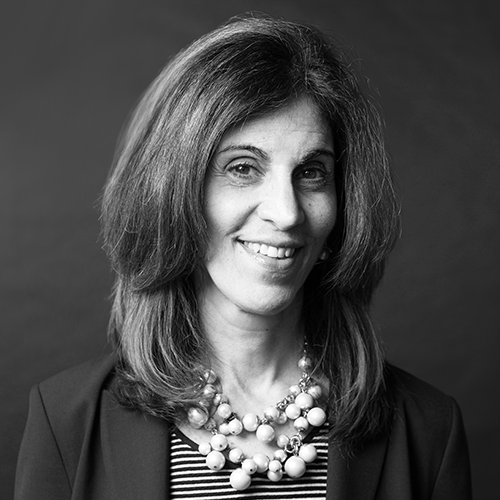Uber, the San Francisco-based, smartphone app-driven company, is characterized by speed and speed bumps, intersections, and rules of the road. But those rules are changing—out of necessity.
Curtis Scott, senior legal director of regulatory and global insurance for Uber Technologies, is a force behind compelling lawmakers to make many of those changes. He navigates the complexities of federal, state, and local laws and standards that regulate drivers, insurance, and the taxi industry. Most of these were designed before the rideshare industry was conceptualized, let alone popular. The taxi, private car, and public transportation method of travel through urban areas required a different set of rules.
Understanding and enforcing the insurance policies that protect Uber drivers are among Scott’s responsibilities. Previously, policies were not written for the hybrid nature of part-time, ridesharing drivers: a taxi driver, it was assumed, used that car for commercial passengers and nothing else, and they did so full-time. Blanket insurance policies for part-time drivers were nonexistent when Uber launched ridesharing in 2012.
This dearth in appropriate legislation is a problem. Uber and its competitors are working to understand outdated legislation and apply it to their services, but they’re also working with regulators to update the laws and how they are enforced.

It’s working. Uber, currently valued at approximately $62.5 billion, now operates in more than 400 cities across more than seventy countries, and Scott’s legal team is one of the reasons why. “This is a pretty exciting place,” Scott says. “It’s attractive to work here, it’s challenging, and we hire the best and the brightest.” Scott manages a group of forty attorneys and paralegals in ten offices around the globe, and that comparatively small team handles entrenched livery-transportation regulations in hundreds of jurisdictions. Scott racked up over 300,000 air miles in 2015 alone to do it right. Here, he outlines the struggles Uber faces and the people behind the solutions that have the rideshare giant in business.
Don’t get combative
Uber’s disruption of the transportation industry frequently makes news in consumer and business press. Some cities have effectively blocked Uber from launching on their streets, but many more have found ways to adapt the Uber model.
Adaptation is the key to making it work, Scott says. “Diplomacy is important,” he says. “Fortunately, our platform is adaptable from city to city.”
He emphasizes how important it is not to grow combative when working with local regulators and lawmakers. “I try to solicit feedback to determine what will work in each city,” he explains. “In most places, people are asking for Uber.”
The ridesharing model succeeds not just because it’s faster and cheaper. Scott points out that Uber increases access to transportation.
Uber Drivers by the Numbers
14,000 in Paris
20,000 in Boston
25,000 in London
26,000 in Mexico City
35,000 in New York
38,000 in Chicago
39,000 in San Francisco
56,000 in Los Angeles
Source: Uber
Many drivers work near where they live, including suburbs, where taxis are rare but people nonetheless need transportation.
Scott adds that Uber, perhaps unexpectedly, can help reduce congestion. Twenty percent of riders worldwide and the majority of riders in San Francisco opt for UberPool, which picks up multiple riders in one car.
Despite its popularity and benefits, insurance concerns were a major problem as Uber tried to expand. Scott previously worked for Allstate and its online Esurance subsidiary, and he hired fellow insurance industry veterans to manage the issue. “People with legal and underwriting experience give us credibility,” he says. “They speak the language and helped develop the US insurance policy model.”
Rethink insurance and local law
No one person solved Uber’s insurance problems, but the company nonetheless looks up to one person in particular. Scott’s colleague, Gus Fuldner, is the head of insurance.
When full-time taxi driver insurance was prohibitively expensive for Uber’s part-time contractors, Fuldner found alternatives by learning the technical details of state insurance regulations. The head regulator of insurance in Illinois told BuzzFeed that Fuldner may have singlehandedly kept Uber in business. “He’s one of the smartest guys I have ever met,” Scott says. “He understands insurance and the complicated regulations to their core. He is able to read an incredible amount of information quickly and instantly analyze and apply it.” Thanks to Scott, Fuldner, and their colleagues, twelve insurance companies now offer rideshare policies.
Uber’s Global Growth
1. Uber operates in seventy countries and more than 400 cities. Recently, Uber added Lodz, Poland, and Silesia, Poland, to its portfolio.
2. Uber tallies more than 169 million trips per month globally, including more than 50 million trips per month in the United States.
3. The billionth Uber ride took place in December 2015.
4. In the United States, 60 percent of drivers drive ten hours or fewer per week.
5. Uber has nearly 7,000 employees globally.
Source: Uber
“There are several state insurance commissioners who contributed significantly,” Scott says. “Oklahoma, New Mexico, and California brought a lot of things together and made a positive impact.”
Affordable insurance for Uber drivers, proponents argue, makes sense because Uber drivers pose less risk to fellow drivers than their private counterparts. Uber drivers usually drive fewer miles than private drivers, work near their homes, and only take rides in areas with which they’re familiar. Unlike taxi drivers, they do not weave in and out of traffic, searching for passengers on curbs.
Scott adds that Uber’s unique two-way ratings system, in which drivers and passengers provide feedback about each other through the app, keeps the behaviors of both in check. These ratings keep both drivers and riders safe in cases of harassment or after an accident.
In addition to updating access to insurance, local regulation that defines how Uber is able to operate is undergoing necessary change. California was the first state to adopt a set of rules that apply to and define transportation network companies like Uber. Two years later, thirty-one states followed suit. Another five are in the process of considering such legislation, according to published reports from the Council of State Governments.
How they made adaptation work
Uber’s insurance and regulatory professionals had to understand the complexities of hundreds of local insurance regulations to make them work for Uber. But the payoff is clear.
“The offering is entirely flexible for drivers,” Scott says. “It adapts to their life situations. We have teachers who can drive in the summer and personal trainers whose main work is in the morning and the evening, so they can fill out the middle of their day. Many drivers are military spouses who have to move around a lot. For a lot of unemployed people, it’s a way to get back to employment.” Most Uber drivers are on the road ten or fewer hours per week, but their volume and accessibility on the app keeps Uber at the top of the industry.
Before Uber and similar businesses launched ridesharing in and around 2010, the controlled-supply model of the taxi industry frustrated users as well as drivers. For example, in Uber’s home base of San Francisco, California, the supply of cabs is limited, as in many cities, by a finite number of “medallions” that haven’t grown proportionately with population increase.
The press reported about taxi drivers who appealed to local legislatures in an attempt to block Uber, yet this tells very little of the story. The medallion model hurt their access to work, as well. Today, many former taxi drivers are part of the Uber team. In some cities, they can use their checkered yellow cars as part of UberTAXI.
“I want business-minded attorneys. They have to be the kind of lawyers willing to go out into the field and meet with regulators to come up with solutions that work for drivers and riders.”
The people in Uber’s San Francisco office, and those who travel the globe, have made these successes possible. People such as Scott and Fuldner have made Uber a disruptor.
Now, Scott’s goal is to ensure his legal team continues to help Uber push boundaries, not throw up obstacles of their own. “I want business-minded attorneys,” he says. “They have to be the kind of lawyers willing to go out into the field and meet with regulators to come up with solutions that work for drivers and riders.”
As news reports will attest, the company still faces resistance and litigation, and competitive imitators are popping up across the globe. That always happens when industries are reinvented.
Scott and his colleagues navigate the intersection of old and new, and of providing an in-demand service that meets expectations of regulators and insurers, drivers, and passengers. It’s that commitment to understanding the needs of all of these groups that has kept Uber not only in, but at the top of, the rideshare business.


